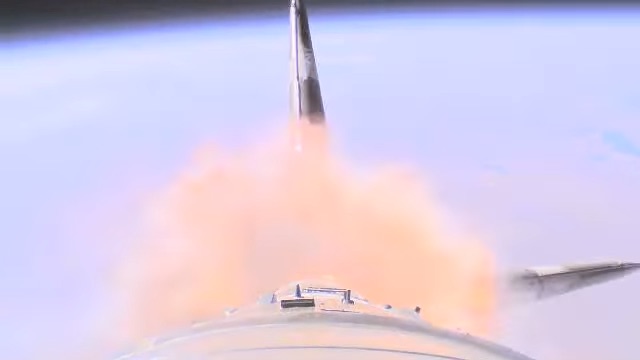Russian space officials held a news conference to lay out their findings into an October 11 accident that involved the launch of a Soyuz FG rocket and its spacecraft. The crew of NASA astronaut Nick Hague and Russian cosmonaut Aleksey Ovchinin escaped safely, but the rocket was destroyed.
The problem, the officials said, boiled down to a “bent” sensor on one of the rocket’s four boosters that failed to properly signal stage separation. This caused one of the booster stages to improperly separate from the rocket, which can be seen in the video released by the space agency. This booster then struck the core of the rocket, causing a significant jolt and triggering one of the Soyuz spacecraft’s automatic escape systems.
According to the officials, the sensor rod was bent by a little more than 6 degrees, and this happened during assembly of the rocket. The Russian space corporation, Roscosmos, has classified this as a handling error. To fix the process, Soyuz rockets already assembled for launch with their booster packs will be disassembled and reassembled to assure that similar mistakes have not occurred.
There are several configurations of the Soyuz rocket used by the Russians to get people and payloads into space, and generally they share a common separation system. A Soyuz 2-1b rocket has already launched after the accident, safely carrying a military reconnaissance satellite into space one week ago.
More Soyuz launches are scheduled for this month, including the launch of a Progress supply spacecraft to the International Space Station on November 16. This mission will fly on the same Soyuz FG configuration of the rocket used for human flights, and if this flight goes well, it is expected that Soyuz crewed missions will resume in early December. The next mission to the space station, MS-11, will carry Russian Oleg Kononenko, American Anne McClain, and Canadian David Saint-Jacques.
Although NASA has not said so publicly, it must be a concern for the US space agency that, for the second crew launch in a row, a quality-control issue has caused a significant problem with a launch system used for humans.















